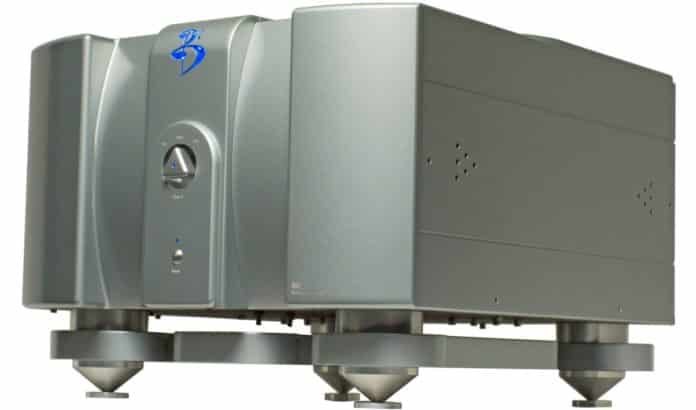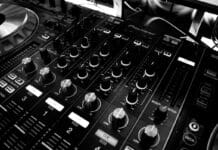
The stereo amplifier serves as the central hub of your audio system, around which everything revolves. Because it is the conduit through which everything flows, it can make or break your sound.
This necessitates being picky when it comes to selecting an amplifier. But the most bugging question while choosing the best stereo amplifier in a tight budget is – ‘Which Amplifier Is the Most Effective?’
The obvious choice is the one that produces a pleasant sound. This should be your primary determining factor, which means that you should pay close attention to what you are hearing before choosing a stereo amplifier.
Another important factor is a great soft start design. Learn more about soft start design.
The unfortunate truth is that few individuals have the time or the opportunity to do thorough research and testing. The specs sheet of an amplifier, on the other hand, may disclose a great deal about the quality and ability of the amplifier to create an outstanding sound for those who are well-informed. Here are few things one must consider:
Stereo Amplifier – Power Output:
The power output is roughly equivalent to the loudness at which music may be played. The bigger the speakers or area, the more power you’ll need. In general, 10W is sufficient to blow the roof off most parties, and 100W is sufficient to blow the roof off the majority of parties!
Total Harmonic Distortion + Noise (THD+N):
THD + N (Total Harmonic Distortion + Noise) is a metric that indicates the degree to which an amplifier influences the sound output. By and large, more distortion equates to increased color in the sound. The lower this value, the more true to the original recording the amplifier’s output will sound. Naturally, speakers have the most significant influence on the sound, so select those most suited to your listening tastes.
SNR (signal-to-noise ratio):
When the children are at home, and the television is on, noise is not apparent, but the background noise remains present. An amplifier is similar; the electrons flying about within generate a very little amount of noise. The objective is to block out surrounding noise, enabling you to hear more of the music and less of it. A measure for this is the signal-to-noise ratio.
Collaboration:
Because amplifiers are all one box, they attempt to be separate boxes for each channel, separating the signals so that when they reach the speakers, the singer is somewhat to the left of the stage and the violins slightly to the right. As stereo separation is compromised by crosstalk, it becomes more challenging to identify the instruments’ positions.
Stereo Amplifier – Interfaces/Inputs:
Consider the different connection options, including 3.5mm for iPods, Phono for turntables, and USB for laptops and home theatre PCs. They all have their advantages, and if you just have a few options, choose the one with the best sound quality.
Here are the three top budget-friendly stereo amplifiers:
Marantz PM6006 Integrated Stereo Amplifier:
Marantz is not a new name in the audio business; in fact, it has made a name for itself by consistently outperforming the competition. The PM6xxx line of low-cost stereo amplifiers has proved to be very popular in recent years. This one is costlier than many of its predecessors, but there’s a good reason for that pricing increase. This is probably the most well-rounded stereo amplifier that the business has produced to date.
Advantages:
• The audio output is beautiful and enjoyable to listen to.
• A construction that is both sturdy and long-lasting.
• There are a plethora of connectivity options accessible to you.
Disadvantages:
• The disadvantage is that Bluetooth is not supported.
Specifications:
• Power: 40W x 2 RMS at 8
• Integrated DAC: Yes
• Weight: 17.3lbs
NAD316BEE Integrated Stereo Amplifier
North American Design Electronics is a Canadian audio company with its headquarters in the Greater Toronto Area. They have a dedicated team of audio engineers working hard to make high-fidelity audio equipment more accessible to the general population. The business is well-known for manufacturing reasonably priced and dependable audio equipment. They put a high value on quality above quantity in all of their products. In this regard, the NAD C 316BEE is a superb example.
Advantages:
• The design is elegant while remaining modest.
• The volume knob and buttons are excellent.
• The construction quality is exceptional.
• Streamlined and enjoyable audio is what we strive for.
Disadvantages:
• The disadvantage is that Bluetooth is not supported.
Specifications:
• Power: 40W x2 RMS at 8
• Integrated DAC: Yes
• Weight: 12.1 pounds
YAMAHA R-N303BL Stereo Amplifier
One of the most commonly used stereo amplifiers today is, without a doubt, this model. It’s also the most well-rounded of the choices on our list, which is saying something. While the previous two options are excellent, we think this will appeal to a broader range of people. These factors include excellent sound quality, Bluetooth connectivity, and low cost of ownership. It also helps because Yamaha is a well-known brand name in the industry.
Advantages:
• The use of Wi-Fi and Bluetooth connections are both beneficial.
• Alexa receives input via a phono input device.
• The sound quality is outstanding.
Disadvantages:
• The setup process is a bit time-intensive.
Specifications:
• Maximum power: 100W x2 RMS
• Built-in digital audio converter (DAC): Yes
• Weight: 15.9 pounds










I appreciate the comprehensive breakdown of factors to consider when buying a stereo amplifier, especially on a budget. Your point about listening to the sound quality before making a choice resonates with me. Also, thanks for the shortlist of budget-friendly options, I’ve been considering the Marantz PM6006 for some time now. However, the lack of Bluetooth is a bit of a letdown. Guess it’s time for more research!